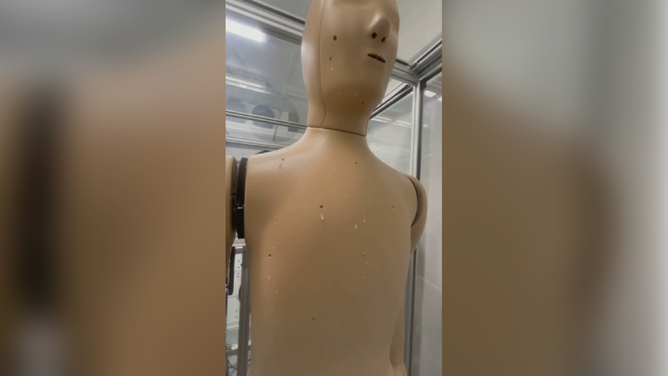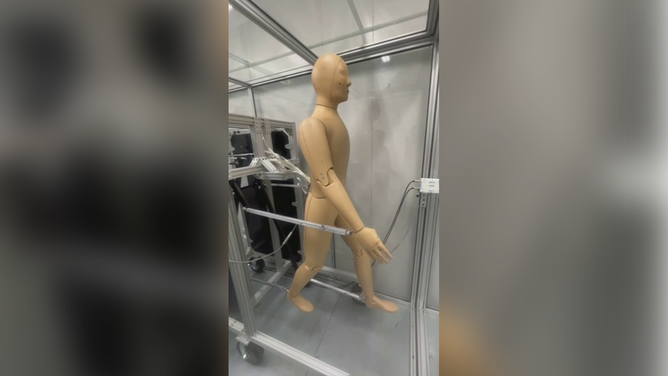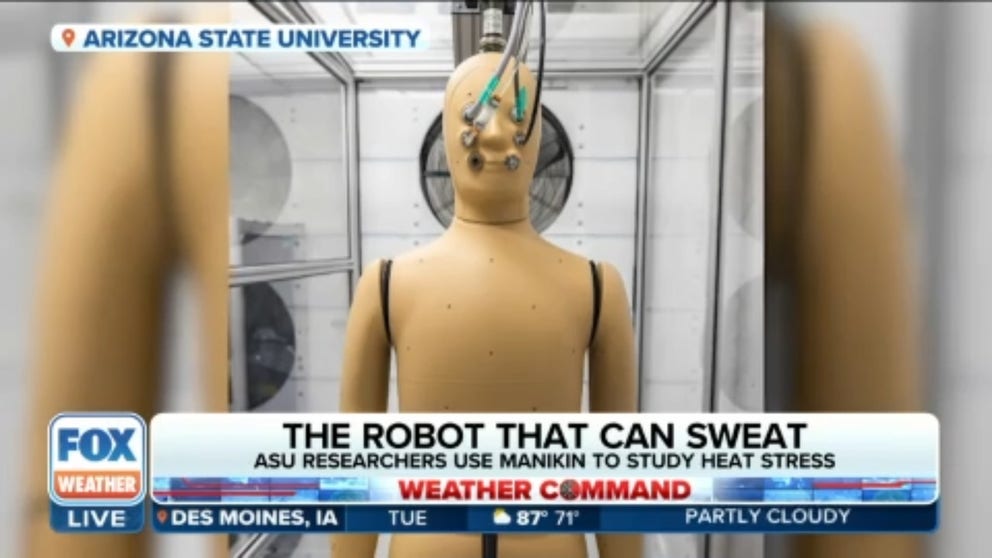Sweating, shivering mannequin aids research on how bodies respond to extreme temperature
As millions of Americans continue to face dangerous temperatures this summer, the effort to understand why hot weather can be deadly is becoming a critical mission.
Sweating robot helping researchers study heat stress on humans
Researchers at Arizona State University are using a high-tech mannequin as a tool to learn how the human body is responding to extreme heat.
Researchers at Arizona State University are using a high-tech mannequin to learn more about how the human body responds to extreme heat.
The thermal mannequin named ANDI can shiver, sweat, walk and breathe. As millions of Americans continue to face dangerous temperatures this summer, understanding why hot weather can be deadly is becoming a critical mission.

Researchers at Arizona State University are using a high-tech mannequin as a tool to learn more about how the human body is responding to extreme heat.
(Arizona State University)
"ANDI stands for Advanced Mutant Dynamic instrument, and it’s an instrument that can mimic how the human body reacts to this extreme heat," said Arizona State University professor Ariane Middel. "It can mimic how you sweat, how you would shiver in the cold. It can simulate your body's core temperature. It can simulate your skin temperature."
Middel said ANDI could also be used to run experiments to figure out how humans would react to the extreme heat that has been baking Phoenix for more than a month.
Experiments could help develop new cooling strategies

Researchers at Arizona State University are using a high-tech mannequin as a tool to learn more about how the human body is responding to extreme heat.
(Arizona State University)
"We couldn’t run these experiments with real people because we potentially might kill them," she added.
For the first round of experiments, Middel said ANDI will simply stand under the blazing hot summer sun and sweat.
EL NINO DELIVERS ON EXPECTATIONS WORLD IS HEADING TOWARDS PERIOD OF ALL-TIME RECORD HEAT
"He has internal cooling channels and lots of cables and pipes and tubes that essentially transport the sweat to the skin of the mannequin," she said. "So, it doesn’t really have organs like humans do, but the sweating mechanism happens as it would happen for humans."
The hope is that results from the various experiments will help develop new cooling strategies and test current ones to measure their effectiveness.
EL NINO, CLIMATE CHANGE TO LIKELY MAKE NEXT 5 YEARS HOTTEST RECORDED ON EARTH, WMO SAYS

Researchers at Arizona State University are using a high-tech mannequin as a tool to learn more about how the human body is responding to extreme heat.
(Arizona State University)
"So, we will look at different types of clothing, different materials, different colors, how they could potentially cool down the human body," Middel said. "We could also look at the impact of urban design. So, we’re going to team up ANDI with MaRTy (Mean Radiant Temperature)."
MaRTy, Middel said, is a mobile weather station that can measure the heat load on the human body.
"So, then we can use MaRTy to measure the heat load, and then ANDI can tell us how the body would react to this heat load," she said. "And then we can look at strategies such as shading, planting more trees and what those strategies would do to the human body, and they would potentially cool somebody down."
